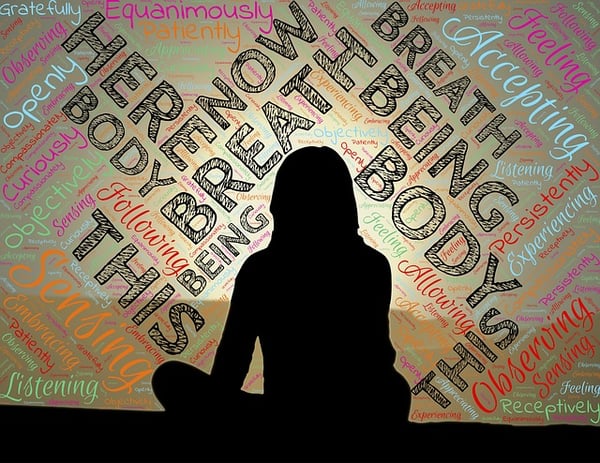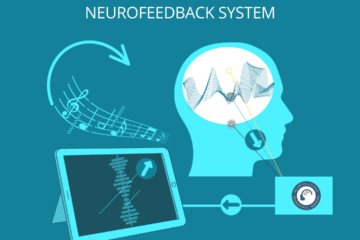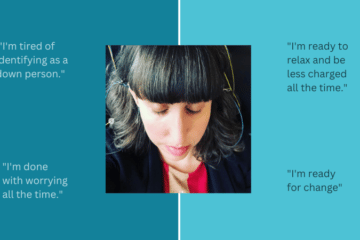Therapist, meditation teacher, and neurofeedback trainer, Alison Pepper LCSW, layout 4 key ways to support yourself and your mental health this fall with radical self-care.
A seasonal shift from summer into fall can be a time for adjustment for many. As you are putting away your sandals and getting out your scarves you start to pay closer attention to how you feel now that the sun is rising later, setting earlier, and the air is cooler.

Radical Self-Care: What It Is And Why It Is Important
In today’s busy modern world it is hard to find time to slow down and do something truly for yourself. The idea behind radical self-care is just that – loving and caring for yourself is indeed a radical act! We are always asked to show up, be on, and do things for others all the time. Therefore, it is equally important to balance the demands of work-life, family-life, and perhaps a social or spiritual life, to also prioritize you!
Read Also: More Joy, Relaxation & Calm: Stress Relief with Neurofeedback Training
1) Healthy Food For Self-Care: Support Your Mind And Mood
More and more, modern medicine is recognizing the influence of diet on good health. A new research study shows that eating a diet rich in vegetables, fruits, nuts, and fish may result in larger total brain volumes and thereby better long-term brain health. Read more about this and other brain-focused studies here in Neurology Times. What you eat greatly impacts your energy level and how you feel.

Did you know that magnesium-rich foods are super great for brain health and brain functioning? Try some out! You don’t need to make major changes to your diet all at once maybe just start by switching up your usual afternoon snack to almonds and a piece of dark chocolate. For other great healthy food tips check out this blog by psychotherapist and neurofeedback trainer Natalie Baker, LMHC.
Read Also: What Foods are good for my Brain?

“In meditation we are constantly discovering who and what we are.” Chögyam Trungpa Rinpoche
2) Mindfulness Meditation For Self-Care: Why Do A Daily Meditation Practice And Where To Start
Mindfulness meditation has been found to help reduce stress. Buddhist meditations like loving kindness have been found to increase empathy, boost resilience and having a sense of over all-purpose. More and more people are talking about meditation and trying meditation. So where do you start? For some, it is an app like Buddhify or headspace. For others, it might be a great book like Thoughts Without a Thinker by Mark Epstein or When Things Fall Apart by Pema Chodron. Learning to meditate and practising with others can be a powerful experience and for that, there are a number of meditation centers one could attend like: Zen centers,Shambhala Meditation centers, Insight Meditation centers. Like with anything new, starting slowly with an open mind can be very helpful.
Read Also: When and How do I Meditate with my Child?
3) Neurofeedback For Self-Care: Improve Brain Function With Neurofeedback – It Can Cheer You Up!
Read Also: Who Can Benefit From Neurofeedback?
What To Expect When Training With NeurOptimal
Before a session, the client fills out a Checklist of Concern which keeps track of one’s progress. During a session, sensors are placed on the head and ears. The client sits in a comfortable chair and listens to audio feedback through a song. It’s very relaxing and no conscious effort from clients is needed, sleep is encouraged! How you will see the effects is different for everyone but most feedback we hear from clients is that they feel calmer, feel more focused, sleep better, and have an enhanced sense of their thought patterns and how they get stuck. Perspective and the ability to hold that perspective appears to be an experience of many who do this kind of neurofeedback training; especially those who train in combination with psychotherapy. Train the brain with Neurofeedback
“I find it amazing when a client comes in after one session and they can see the results in a very clear way. One of my clients referred to it as subtle, but noticed a distinct change in her stress and reactivity to negative situations”
– NeurOptimal Trainer.
See Also: A NeurOptimal Review: Training My Brain and Others
4) Therapy For Self-Care
Therapy can be a powerful tool for support and self-discovery. Only you will know when the right time for therapy is and what you hope to gain from it. Finding a therapist and getting started can feel like an overwhelming and daunting task. But you can always start with a phone call, trying calling a therapist, and simply asking her about how she works. Spend some time looking at therapist websites and reading about where someone is located and how he practices.



0 Comments